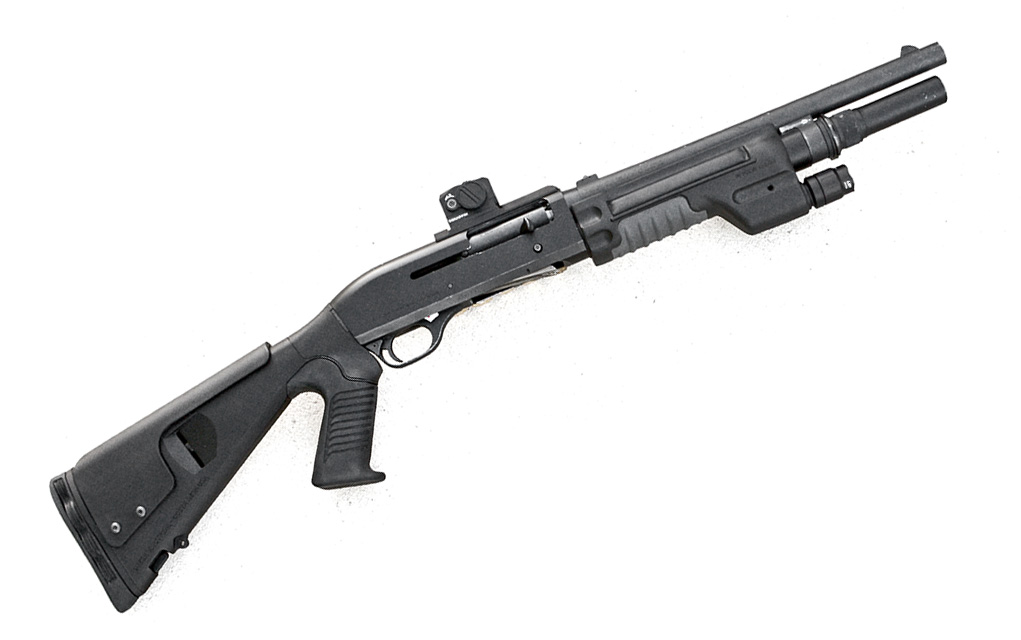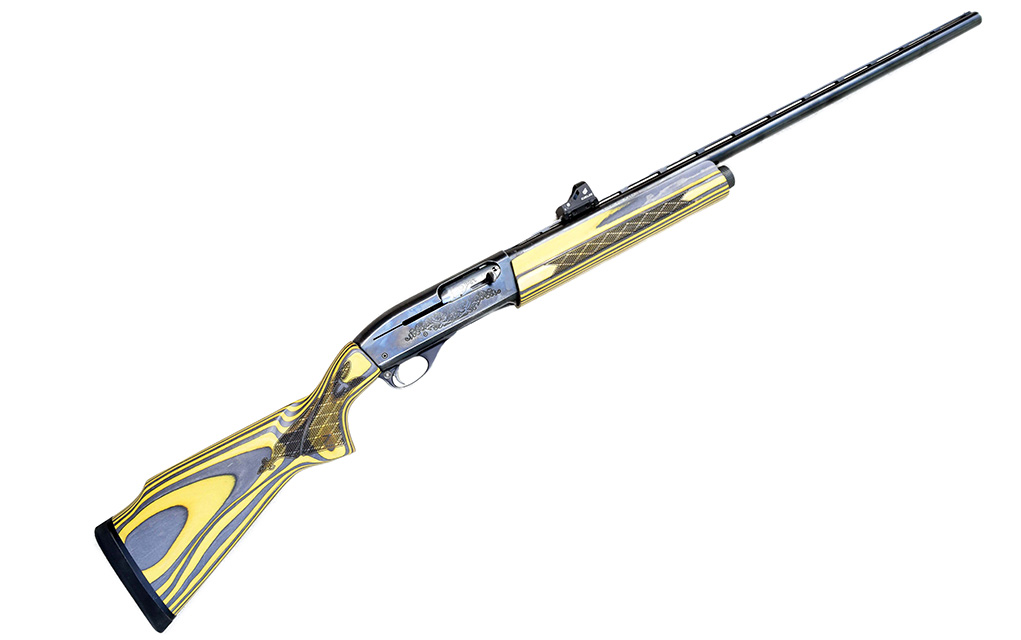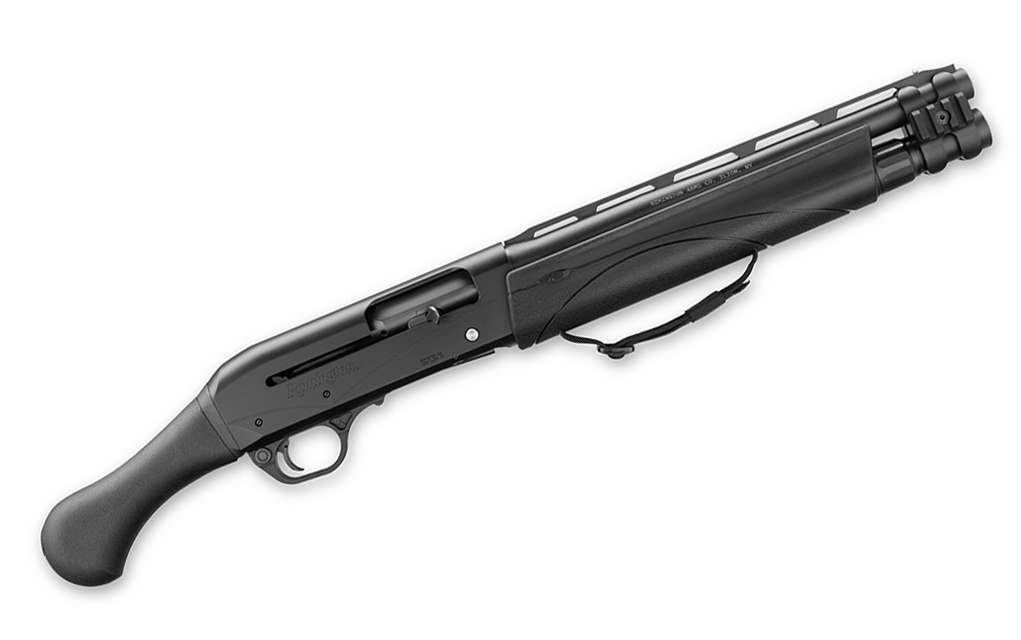
Want to find the best shotgun for home defense? Here, the author discusses their pros, cons and what to consider when buying one.
The shotgun is one of the most familiar firearm platforms in existence. At one time, nearly every home in America had one handy. It put food on the table, protected the home and its inhabitants from intruders, and it was as useful as any other household tool for solving problems.
Yet, in many ways, the shotgun is an enigma.
Myths abound about the shotgun. We’ve all heard a certain politician advocating that people arm themselves with a shotgun and all they need to do is fire two shots in the air to scare off an intruder. Or, maybe you’ve heard that the simple racking of a pump-action will make a home invader quiver with fear.
These are irresponsible and will give many people a false sense of security. Maybe the noise of the action working will cause a teenager who wandered into your home to turn tail and run, but shooting rounds in the air may kill or injure an innocent bystander. Don’t do that. Ever.
Too many people obtain their gun knowledge from movies and television. Not you, of course, you’re smart enough to read Gun Digest. But we’ve all seen movies where someone is shot with a shotgun and the poor guy goes flying through the air. If you have a basic understanding of the laws of physics, you should know that, for every action, there’s an equal and opposite reaction.

Another classic myth is that “You don’t need to aim a shotgun. You just point and shoot.” This may be based on the small size of the factory bead sight found on most shotguns and the tendency for bird hunters and clay shooters to whip the barrel as they shoot to allow the shot to collide with the bird in flight. The bead sight is there for a reason and can be used efficiently with some training or replaced by rifle sights, a low-power scope or a red-dot sight if you prefer.
The bottom line is that you’re putting an ounce or more of lead downrange—you want to make sure it hits whatever you are shooting at … and nothing else.
Pump Or Semi-Auto?
Pump-action shotguns dominated the marketplace for more than 100 years, and for good reasons. They’re reliable, hold at least three rounds and are in an affordable price range. Semi-automatics, on the other hand, were either expensive or unreliable … and mostly designed for sporting use.
However, things have changed over the past 30 or so years. The semi-automatic shotgun has become more reliable and more affordable. The operation is simpler than a pump-action or a lever-action shotgun, and depending on the manufacturer, there’s very good aftermarket support dedicated to allowing these shotguns to function in a role more suited to home-defense.

The eye-opener for me was to have three different semi-automatic shotguns reliably fire more than 1,000 rounds—in each one—without a single malfunction. The old mantra we heard as late as the 1990s about the reliability of a semi-automatic scattergun could be finally put to rest.
There was a time when the shotgun I would grab to respond to a threat was a pump action. Over the past few years, my preference has transformed into a semi-auto. Prices of new semi-automatic shotguns haven’t risen exponentially, but if there’s one thing about dedicated sportsmen who use semi-automatics, they tend to trade up for the latest and greatest often, and some “upgrade” almost every season.
As a result, many used semi-automatic shotguns have been hitting the market at lower price points than some pump-action shotguns. Case in point: I recently scored a well-used Remington Model 1187 for less than $300. It had been poorly painted in an absolutely horrid hunting camouflage pattern, but through the miracle of Cerakote, I had the gun refinished in a more modern Multicam scheme. It looks great, and it looks brand new.
Another good example is a shotgun like the Benelli M1 Super 90. This was the go-to tactical semi-automatic shotgun for decades, until it was phased out and replaced by the likes of the Benelli M2, M3 and M4. Coming in at several hundred dollars cheaper than the M4, the M1 Super 90 is still a great no-nonsense firearm.

Capacity
Most semi-automatic shotguns rely on tubular magazines to feed the shells, just like a pump shotgun. To increase capacity, you only need to purchase a magazine extension and a longer magazine spring. You can further enhance this by going with an aluminum follower over the plastic factory piece.
Even with the longest magazine extensions available, you’re limited by capacity. Some shooters get around this by running mini shotgun shells in pump-action shotguns. For the semi-automatic, they can be hit or miss with feeding reliably, so I tend to avoid them. Yes, they’re very effective and solve the capacity problem … when they feed reliably.
It’s worth noting that there are many semi-automatic shotguns on the market that take a detachable magazine. Many of these magazines are three-rounders, but there are larger capacity versions available … some of them much larger. This can be the weakest link in these systems. While they’re a lot of fun at the range and magazine quality is improving, the jury is still out on relying on one for personal defense. If you like them, great, but do become very familiar with their operation.
Onboard ammunition carriers, from companies like Mesa Tactical, address this by bolting 4-, 6- or 8-round carriers that hold shells on the side of the shotgun’s receiver. These are installed and held in place using threads that replace the scope mounting holes atop the receiver. If the shotgun isn’t drilled and tapped, this can be easily accomplished by a gunsmith. Mesa Tactical’s side-saddle type mounts can incorporate a mounting plate for an RMR-type sight, solving the issue of adding a red-dot to the shotgun.

While there may be some merit to having a shotgun look benign in case you find yourself in front of a jury defending yourself after you just defended your home and family, a good shoot is a good shoot. There are accessories out there, from integrated forend lights to M-Lok compatible mounting solutions, to equip your shotgun to make it easier to shoot.
Downsides Of Shotguns
There are some disadvantages to using a shotgun for home defense. Recoil can be downright brutal in a 12-gauge for new or small-stature shooters. For a long-gun, you’re limited on effective range and, in some cases, can do better with an accurate pistol. However, many semi-automatic shotguns tend to absorb about 20 to 30 percent of the felt recoil as this is used in order to cycle the action. In short: Semi-autos generally produce less felt recoil than pump-action shotguns in the same gauge.
For the recoil sensitive, a 20-gauge may make a good compromise since there are plenty of options that suit the requirements of a defensive and hunting arm. You can have less recoil without giving up too much payload, as compared to its 12-gauge big brother.
Going away from these two calibers is not recommended. Sixteen-gauge, for example, lies between these two shells on the power scale, yet because it’s semi-obsolete (albeit making a comeback with masses), the most commonly found rounds are loads intended for birds and small game. Going smaller to 28-gauge is pretty much the same in that regard.
There are a number of options in .410, including models virtually identical to ARs and AKs. There are buckshot loads that hold approximately three pellets, slugs and different special-purpose loads from Hornady and other manufacturers. However, this ammunition can be hard to come by at times, isn’t necessarily cheap and may require a significant amount of testing to ensure it’s accurate and reliable to fill a defensive role.

Some of these shotguns can be sensitive to certain ammunition types, but for the most part, the modern semi-automatic shotgun is as reliable as a manually operated pump. Be wary of those that feed from a detachable magazine—it’s often the weakest link in this system, as mentioned earlier in this article. At the same time, shells with a low-brass hull or lower-powered, reduced-recoil loads may cause functioning issues in semi-autos. Test your gun and ammo combo, and beware of any potential reliability issues … and then eliminate the problem.
Another issue with home-defense shotguns is that they can be a bit long to maneuver within the confines of the home and are hampered by a barrel length of 18 inches and an overall length of 26 inches at the minimum.
A relatively recent class of firearm that can handle shotgun shells are the Shockwave or TAC-14 firearms from Mossberg and Remington, respectively. They’re based on the old witness-protection style of firearms used by the U.S. Marshal Service before short-barreled ARs came into their own. They’re difficult to shoot well at first but are better than so-called “riot guns” that come with a vertical pistol grip and no stock. These firearms are capable of firing shotgun shells and ship with a 14-inch barrel and cannot be equipped with a buttstock without filing a BATFE Form 1 and paying the associated $200 tax. The semi-automatic version from Remington is the TAC-13.

Tried And True
The semi-auto shotgun may be the most enigmatic firearm out there. Many shooters love them, but they catch a lot of flak for their perceived limitations. However, when it comes to home defense, the right shotgun can be ideal to protect your home … and your family within.
Editor's Note: This article originally appeared in the April 2024 issue of Gun Digest the Magazine.
More On Shotguns:
- Understanding The Semi-Auto Shotgun
- 8 Affordable Double-Barrel Shotgun Options
- 11 Affordable Pump-Action Shotgun Options
- Lever-Action Shotgun: Past, Present And Future
- Best Over/Under Shotgun: Affordable Doubles (2024)
- 6 Best Bullpup Shotgun Options For Compact Defense

Next Step: Get your FREE Printable Target Pack
Enhance your shooting precision with our 62 MOA Targets, perfect for rifles and handguns. Crafted in collaboration with Storm Tactical for accuracy and versatility.
Subscribe to the Gun Digest email newsletter and get your downloadable target pack sent straight to your inbox. Stay updated with the latest firearms info in the industry.

![Best Concealed Carry Guns In 2025 [Field Tested] Wilson Combat EDC X9S 1](https://gundigest.com/wp-content/uploads/Wilson-Combat-EDC-X9S-1-324x160.jpg)


![Best 9mm Carbine: Affordable PCCs [Tested] Ruger Carbine Shooting](https://gundigest.com/wp-content/uploads/Ruger-Carbine-Shooting-100x70.jpg)
![Best AR-15: Top Options Available Today [Field Tested] Harrington and Richardson PSA XM177E2 feature](https://gundigest.com/wp-content/uploads/Harrington-and-Richardson-PSA-XM177E2-feature-100x70.jpg)

For me, one of the most-overlooked issues is not so much choosing the “right” action of a defensive shotgun, but sizing it for the intended user. Unfortunately, this often means that if you are like me, and short-statured, you’ll have to find a shotgun model and manufacturer with adequate after-market support and stocks or other custom accessories.
In my case, I needed a youth-sized length-of-pull stock. I’d have preferred a conventional stock, but reasoned that having to keep it shouldered while I used my other hand to operate things like a phone or a separate flashlight or light stick or move something out of the way, it should have a pistol-grip type stock. Back then, when I was shopping around, the 20-gauge guns did not have anywhere near as much representation in the defensive shotgun market. There really weren’t a lot of after market parts available. So I’ve stuck with a 12-ga. Remington 870 4+1. It’s fitted with a pistol-grip youth sized polymer stock, a Turkish-mfr. Carlson 18-in. barrel with rifle sights, a cylinder bore choke installed, an EOTech integrated forend flashlight, and a +4 [not +6] “side-saddle” shell holder. I’ve run it in three defensive shotgun courses, and I’ve practiced with it a lot in a room separate from the ammunition, which is put up and locked away elsewhere for the drills that use “snap-cap” intert ammunition to practice tactical reloads.
I keep the tube mag loaded with No. 4 buckshot shells.
The other big issue with a shotgun intended for defensive use is that it is going to be deafeningly LOUD if fired indoors. So be ready for permanent ear damage if you have to use it, and be prepared to recover your wits if you ever have to use it… It’ll be like a self-inflicted “flash-bang” stun grenade.
No greater scatter gun for the modern age then the Remington 887 pump tactical. Well thought out because it had everything you need on it in the right package and, to me, is still the COOLEST looking shotgun EVER MADE.
It reminds me of one the Space Marines would use in the movie Aliens. Remington, sadly quit making it because like I said, it was the coolest looking collective shot gun you could ever buy, so it had to go. 😉
Yes, it’s reliable.